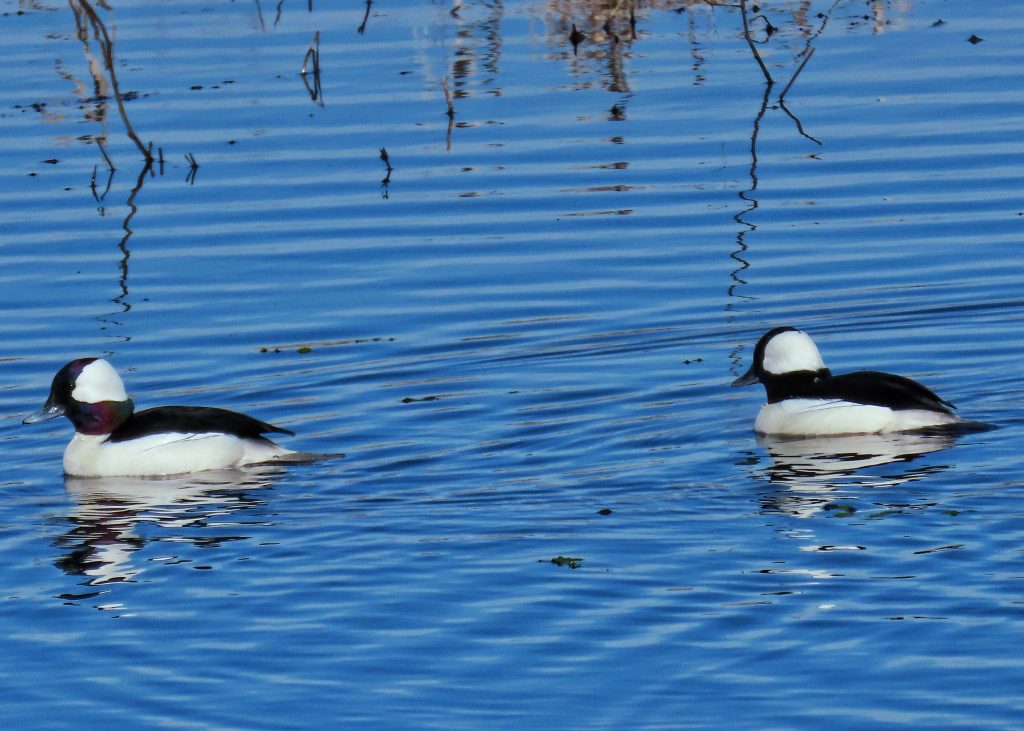
Buffleheads are small ducks (in fact they are the smallest sea duck in North America), although the bold, black and white coloration of the male makes them seem larger, since they really ‘pop’ against the water. For obvious reasons this is the second species of waterfowl I learned to identify at a distance and without optics (because of their ubiquity Mallards were the first).
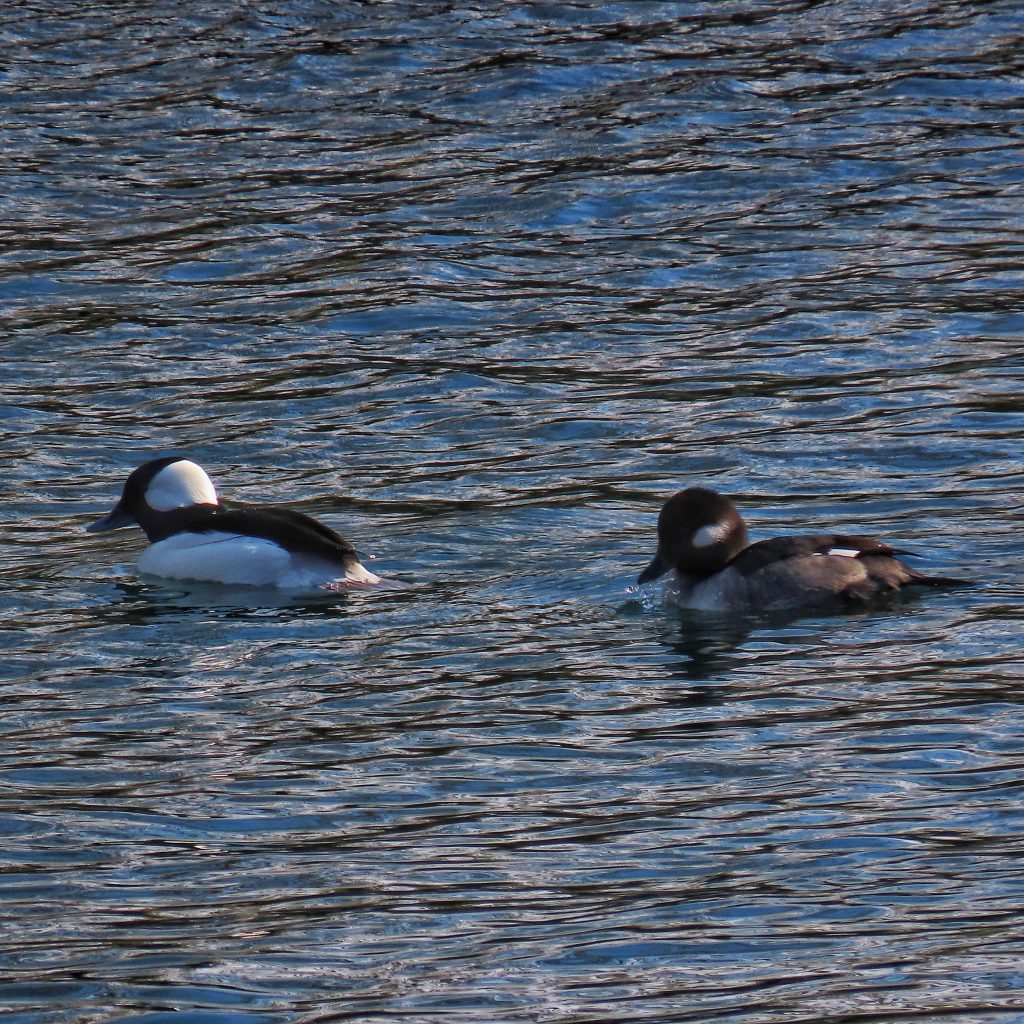
Bucephala albeola are fun ducks to watch, although in my experience they are shyer and flightier than many others. There is a real economy to their dives, and they go from bobbing peacefully to out of sight underwater quicker than anything I see regularly, besides possibly Pied-billed Grebes. And they dive very frequently.
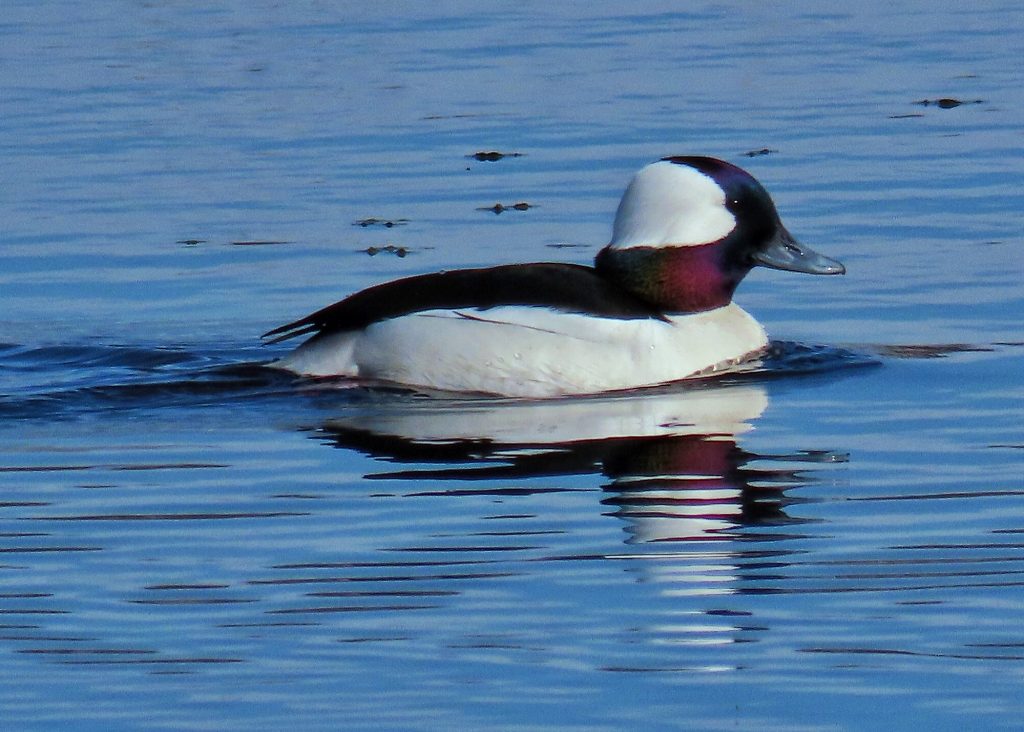
I don’t see them very often as part of a mixed flock. Or as a group with other Buffleheads. Usually it’s a pair or two out on the fringes of a body of water. And when I do surprise them they burst out of the water with an alacrity not shown by most diving ducks, who usually need at least a few feet of running on the surface before they are airborne.
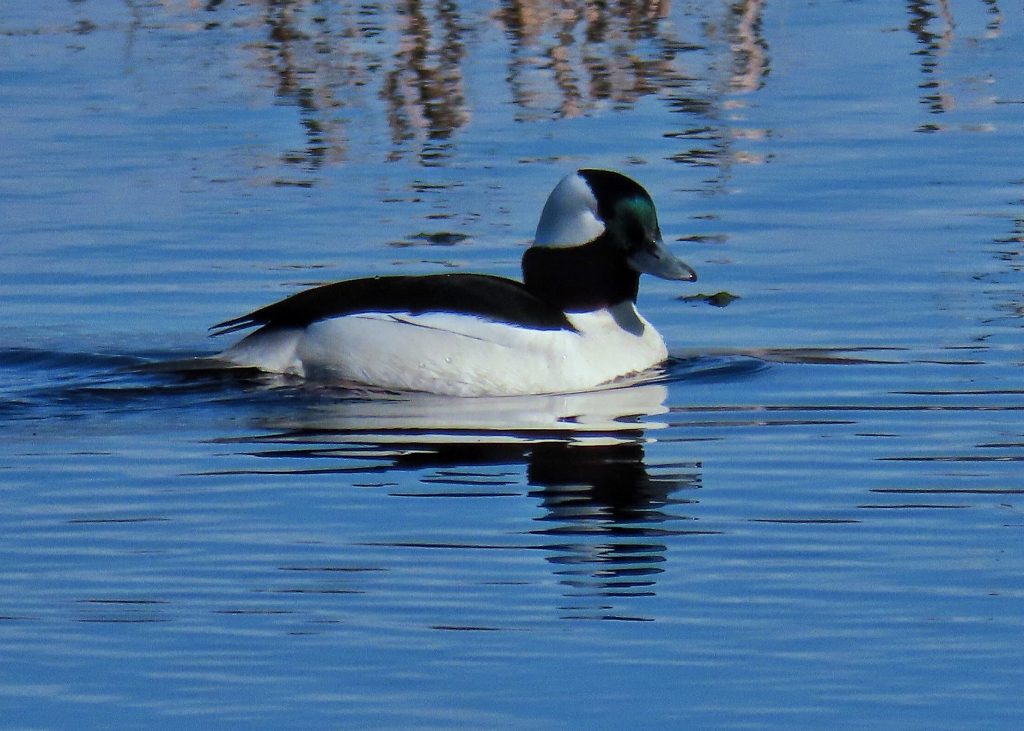
These small ducks much prefer to nest in cavities excavated by Northern Flickers, since the small size of the cavity is sufficient for the Bufflehead, and it cuts down on competition with other tree cavity nesting birds, most notably the goldeneyes. There is a documented instance of a female Barrow’s Goldeneye killing a female Bufflehead and her brood to secure a nesting site!
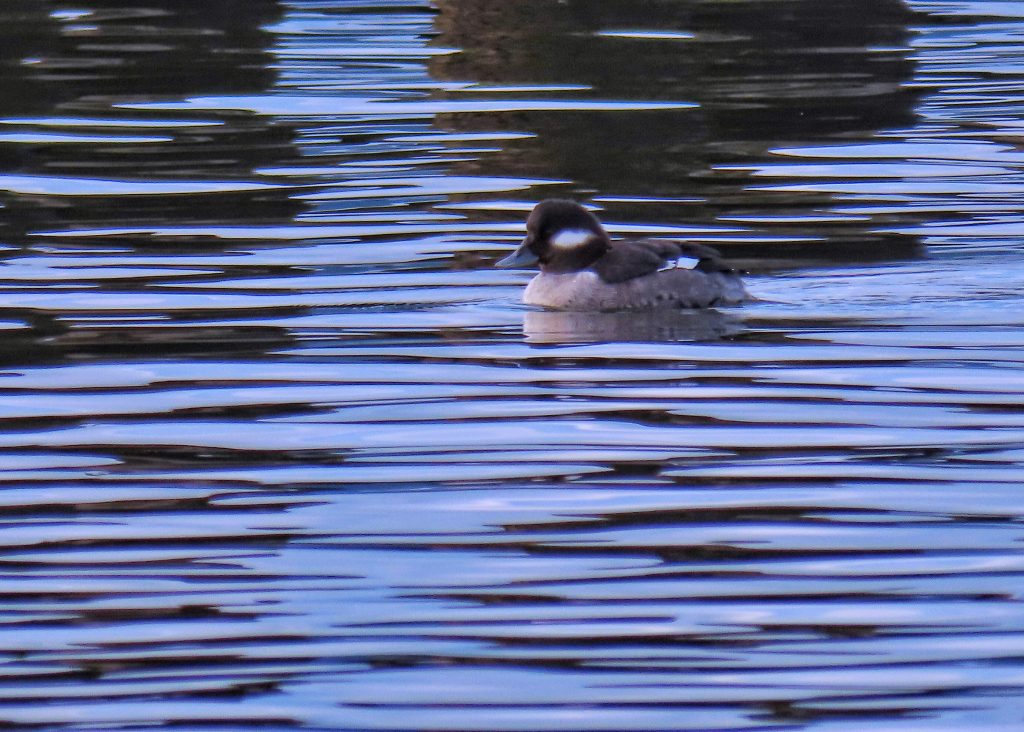
Bucephala albeola often return to good nesting sites several years in a row. The mother usually abandons her chicks before they are fledged, but it isn’t to get a head start on migration, since Bufflehead are one of the last ducks to leave their breeding grounds. Their time of departure does not seem weather dependent, because they usually arrive on their wintering grounds within the same narrow window of time each year.
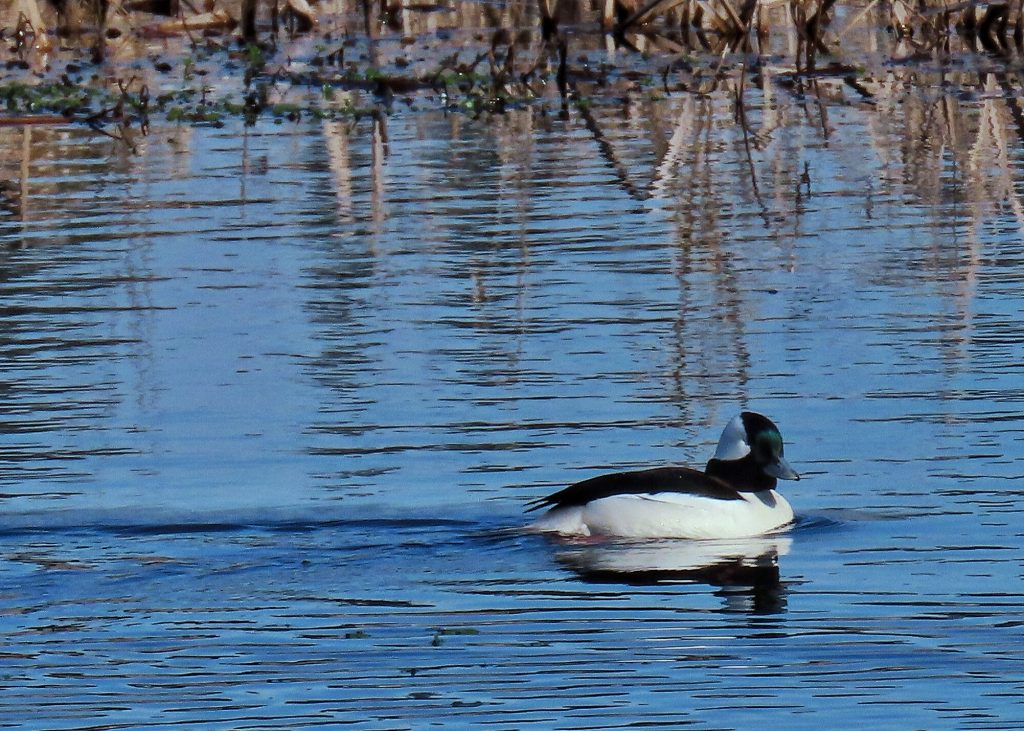
Description– Small, chunky ducks that dive regularly; males are sharply delineated black and white, with white sides and breast, and a white patch wrapping around the back of the head; the rest of them is black, though one often sees purple and green iridescence around the head and neck; females and immatures are grayish brown, lighter below and darker above, with a dark head.
Similar species-Male Hooded Mergansers don’t have white wrapping around the head; Male Ruddy Ducks, Common and Barrow’s Goldeneyes, and male and female Harlequin Ducks have white cheeks like the female Buffleheads, but they are all much larger with bold patterns; female Greater and Lesser Scaup, and Ringnecked Ducks, only have white around the bill.
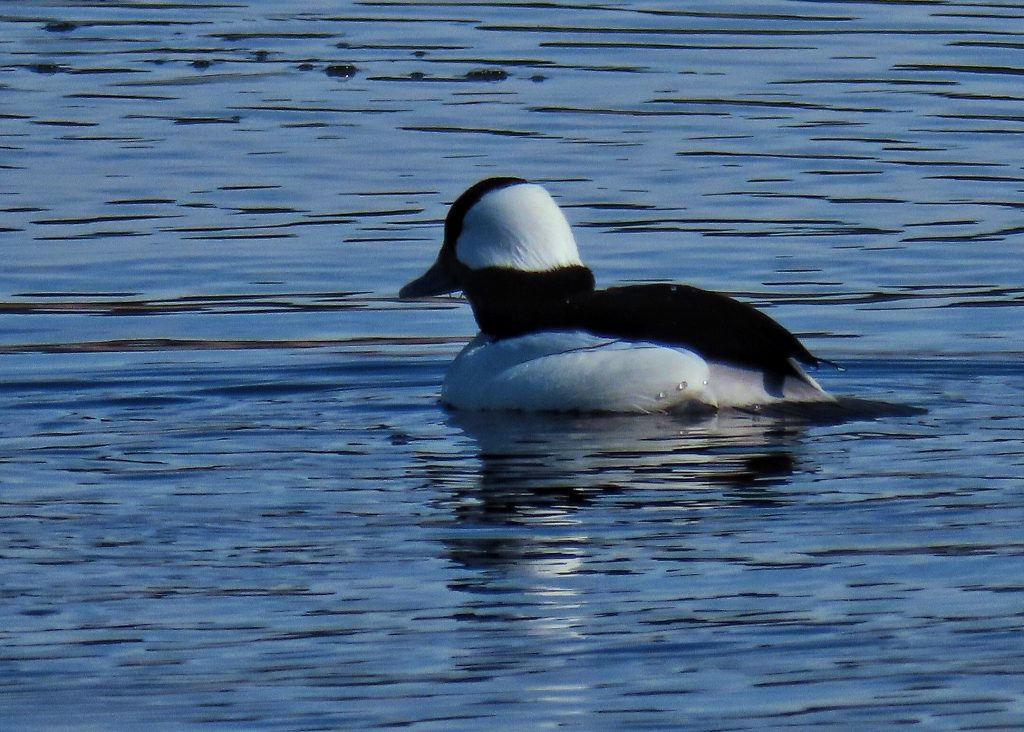
Habitat– Lakes, ponds, sloughs of large rivers, bays, and estuaries.
Range-North America; most breeding happens in Alaska and nw Canada; region wide in winter, though less common in the high desert; some year around residency in the Willamette Valley and Puget Trough.
Eats– In freshwater they primarily eat aquatic insects, snails, and other invertebrates, and will occasionally consume plant material; in saltwater their diet shifts to crustaceans.
Eaten by– Primary predators (besides humans) are bird hunting raptors such as Bald Eagles, Peregrine Falcons, Cooper’s Hawks, Great Horned Owls, and Snowy Owls. Females are also vulnerable to certain arboreal carnivores while brooding eggs.
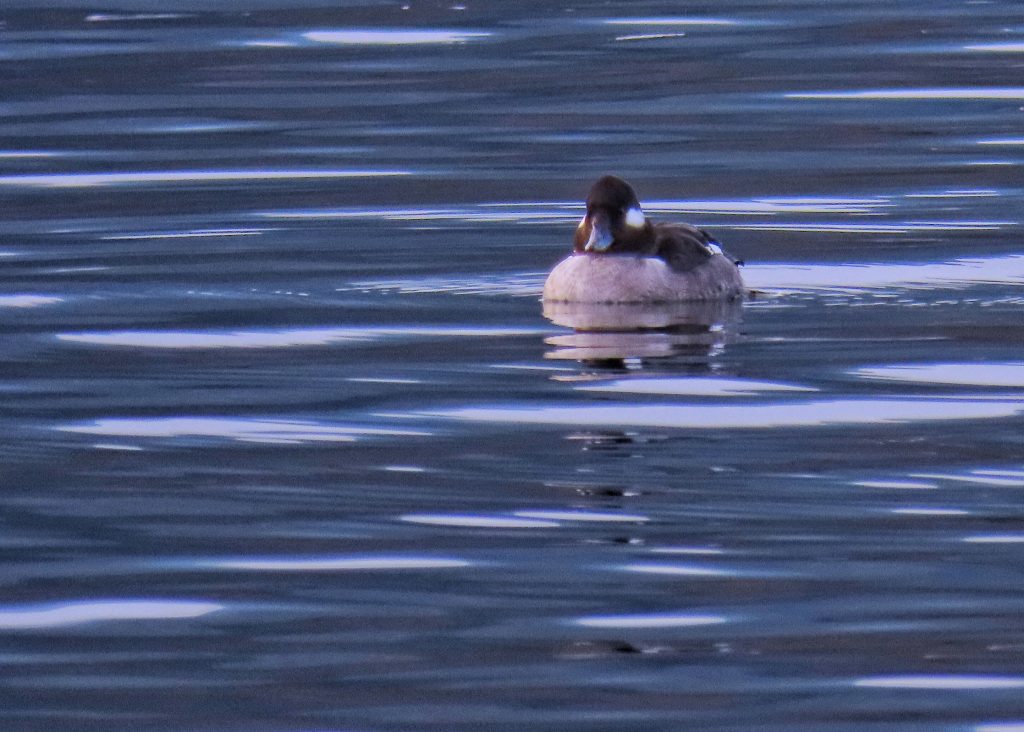
Reproduction– Pairs form in spring, although most Buffleheads are monagamous; nests in trees and frequently utilizes holes excavated by Northern Flickers and Pileated Woodpeckers, lining the bottom with down; 6-12 eggs are incubated for about 30 days, and the precocious young leap from the nest in the first day or 2; fledge at 7-8 weeks.
Etymology of names–Bucephala is from the Latin for ‘bull headed’, which refers to the large, blocky head shape of this species. The species epithet albeola roughly means ‘white patches’ in Latin, which refers to the white on the head and sides of the males of this species. The common name Bufflehead is a contraction of ‘buffalo head’, and again refers to the bulbous head.
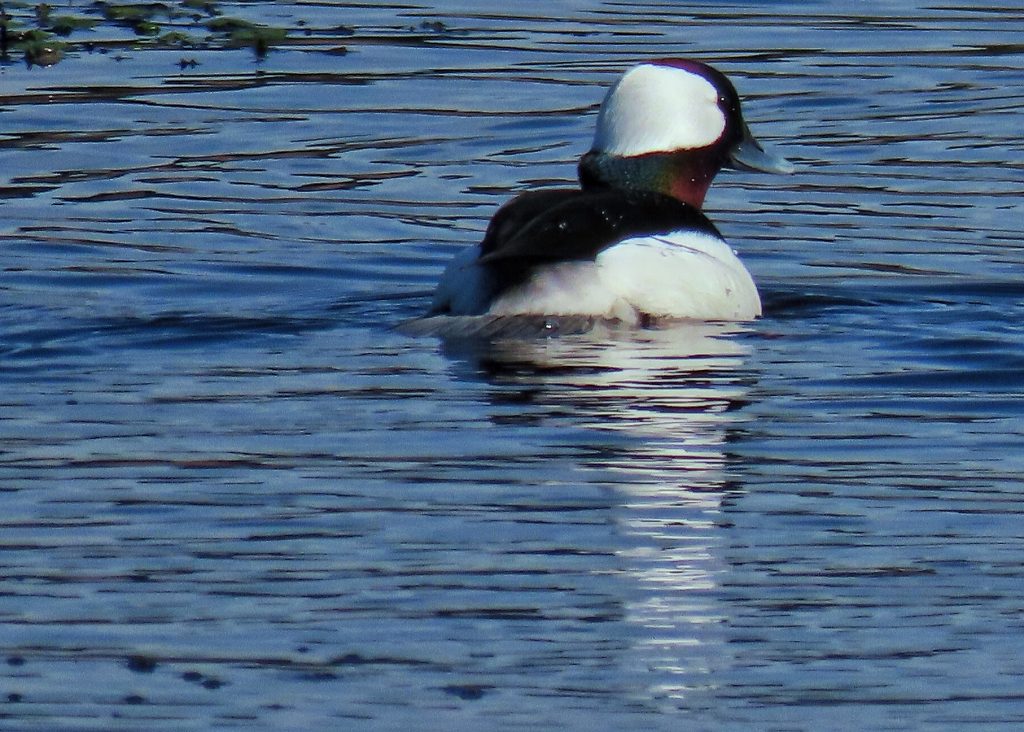
https://www.audubon.org/field-guide/bird/bufflehead
https://www.allaboutbirds.org/guide/Bufflehead/overview
http://naturemappingfoundation.org/natmap/facts/bufflehead_712.html
https://www.eastsideaudubon.org/corvid-crier/2020/bufflehead
https://www.ducks.org/hunting/waterfowl-id/bufflehead
https://en.m.wikipedia.org/wiki/Bufflehead
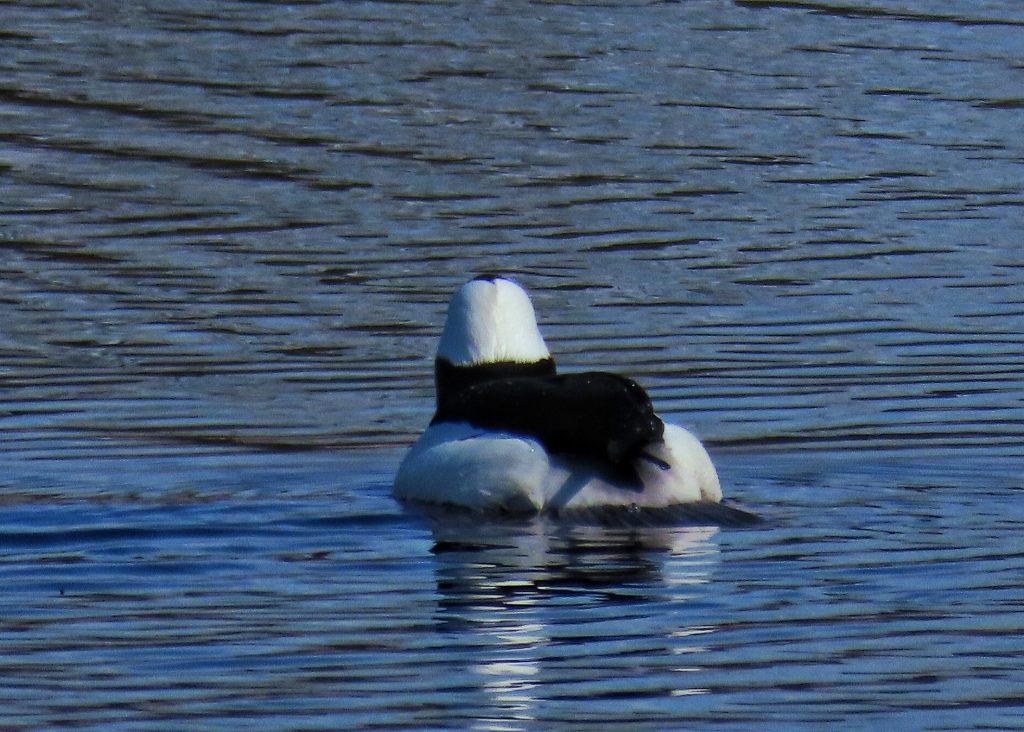
Thanks, Dan! Buffleheads are my favorite, too, because they’re so easy to distinguish.
Thank you! I learned a lot about Buffleheads! ☺️